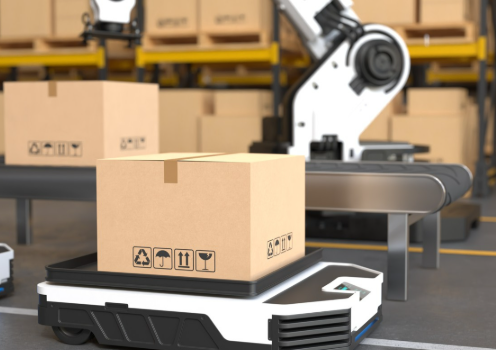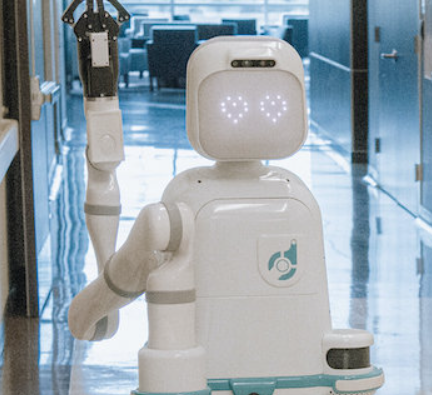
The logistics industry has undergone significant transformation, with inventory control emerging as one of the most dynamic areas of change. In a rapidly evolving market, where speed and accuracy are paramount, automation plays a pivotal role in improving efficiency. Warehouse robotics are no longer just a trend, but a vital solution that addresses the growing demands of modern commerce.
This article explores the impact of robotics on inventory and stock control, highlighting the key applications and benefits of using robots to streamline warehouse management.
The Evolution of Inventory Control in Warehouses
Traditionally, inventory verification and counting were manual tasks, requiring significant time and effort while also being prone to human error. As e-commerce has surged, businesses are seeking more agile, precise, and cost-effective solutions. Enter inventory control robots, which are capable of performing tasks with unmatched precision and speed, all while running continuously to maintain real-time stock updates.
What Are Inventory Control Robots?
Inventory robots are designed to autonomously navigate through warehouses, scanning products and detecting discrepancies. These robots use advanced technology like sensors, cameras, and machine vision to track inventory in real-time, ensuring accuracy without the need for constant human oversight.
Key Features of Inventory Robots:
- High-Resolution Cameras and Sensors: Robots are equipped to scan barcodes, RFID tags, and identify items with remarkable precision using machine vision.
- Autonomous Mobility: These robots can navigate warehouses autonomously, following predefined routes or utilizing navigation algorithms to cover large areas efficiently.
- Real-Time Connectivity: By connecting to Warehouse Management Systems (WMS) or cloud platforms, robots enable seamless data updates and quick detection of inventory discrepancies.
- AI and Machine Learning: Some robots are powered by AI, allowing them to recognize patterns, predict demand, and optimize stock replenishment strategies based on historical data.
Key Tasks of Inventory Control Robots
Warehouse robots are capable of performing a variety of tasks that ensure the efficient management of stock. Here are some common applications:
- Cycle Inventory and Physical Counting: Robots can perform regular inventories without interrupting warehouse operations. They can scan and count products as they move through the space, allowing for continuous stock verification and early error detection.
- Product Identification and Tracking: These robots ensure products are correctly placed on designated shelves, and if a product is misplaced, they alert staff to take corrective action. This is especially useful in large warehouses where misplaced items can lead to delays or lost sales.
- Stock Replenishment: Robots are equipped to monitor inventory levels and automatically trigger replenishment orders when stock runs low. This reduces the risk of stockouts and ensures a seamless supply chain.
- Verification of Expiration Dates: In industries dealing with perishable goods (like food, pharmaceuticals, and cosmetics), robots help track expiration dates, ensuring the oldest stock is used first and minimizing waste.
- Damage Detection: Advanced cameras on robots can identify damaged products during handling or storage, alerting staff to take action, which improves overall product quality and reduces returns.
Benefits of Robotics in Inventory Control
The integration of robotics in inventory management brings numerous advantages, making it an essential tool for modern warehouses:
- Accuracy: Continuous and precise tracking of inventory reduces human errors and ensures stock is properly accounted for.
- Time Efficiency: Automating tasks like counting and location verification saves valuable time, allowing employees to focus on more complex tasks that require human intervention.
- Operational Efficiency: Robots can work around the clock, managing large inventories and ensuring smooth operations without the need for breaks, significantly increasing productivity.
- Real-Time Data: The seamless connection between robots and inventory systems provides live updates on stock levels and item locations, improving decision-making and visibility.
- Cost Reduction: Automating stock control reduces the need for manual labor and the errors associated with manual tracking, leading to cost savings in labor and operational inefficiencies.
The Future of Automated Stock Control
The future of stock control is closely tied to the advancements in technologies such as the Internet of Things (IoT) and Artificial Intelligence (AI). These technologies enable robots to interact more intelligently with their environment, making warehouses more connected and efficient.
As robotics continues to evolve, the integration of robots in inventory management will be further enhanced. These systems will become smarter, more autonomous, and capable of handling increasingly complex tasks, creating a more streamlined and efficient supply chain.
In conclusion, the adoption of robotics for inventory and stock control is a game-changer for warehouses. By automating routine tasks such as counting, product tracking, and stock replenishment, robots can significantly improve efficiency, reduce costs, and minimize errors. As businesses continue to embrace automation, the integration of robotics in warehouse management will become a key factor in maintaining competitiveness in the ever-evolving market.












